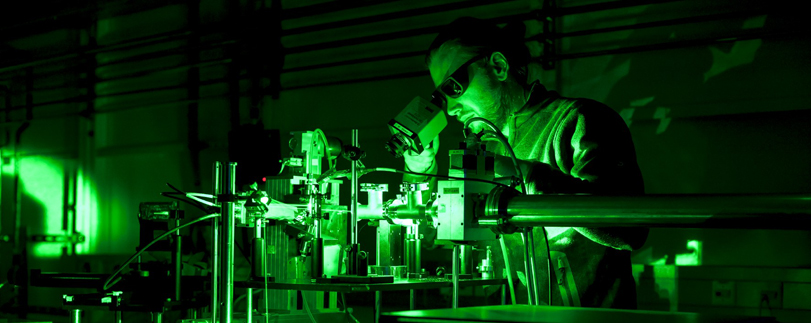Providing direct evidence to Nobel-winning theories
At European XFEL, scientists may actually “see” some of the systems the new chemistry laureates modeled
On 9 October 2013, Martin Karplus, Arieh Warshel, and Michael Levitt were awarded the Nobel Prize in Chemistry for their work in modeling molecular behavior. Their research involved building computer simulations of chemical reactions and the intrinsic motions of molecules, building theories that have changed scientists’ understanding of chemistry. The European XFEL will allow scientists to add direct experimental evidence to the laureate’s theoretical framework.
Chemical reactions happen incredibly quickly. In an extremely tiny fraction of a second, a large molecule such as an enzyme can perform enormously complex reactions. The simulations pioneered by Karplus, Warshel, and Levitt began to show in greater detail what happens at the atomic scale during these tiny timeframes.
With its ultrashort flashes, each lasting less than 100 femtoseconds or 100 quadrillionths of a second, the European XFEL will be able to capture razor sharp images of chemical interactions.
“The purpose of these new, very bright, ultrashort-pulsed X-ray sources is to produce direct experimental evidence for mechanisms in complex systems, such as many catalytic chemical reactions and biochemical processes”, says European XFEL Managing Director Massimo Altarelli. “This will shed new light on mechanisms that today are only accessible through computer simulations such as those that Karplus, Warshel, and Levitt initiated.”
Using its 27 000 X-ray flashes per second, the European XFEL will be able to collect high-quality experimental data on some of these simulated reactions, thus helping scientists understand their complex behavior.

For example, the instruments Femtosecond X-ray Experiment (FXE) and Single Particles, Clusters, and Biomolecules (SPB) will utilize the European XFEL’s high number of flashes to produce direct experimental evidence on the nature of bonds between atoms, the quantum effects of the electrons in those bonds, and the changes in shape in the molecule as it interacts with other molecules in its vicinity.
“Lightsources such as the future European XFEL have the potential to experimentally 'see' such systems and perhaps even understand how they evolve, allowing scientists to perform structural biology analyses or watch their changes down to ultrafast timescales”, adds Adrian Mancuso, who is responsible for the SPB instrument, which is designed to image single particles such as nanocrystals of biomolecules, cells, particles of certain materials, and even, ultimately, individual biomolecules.
The data from SPB and the other five European XFEL instruments will include the structural changes taking place as a function of time—much like how the frames of a movie are timed to produce motion when played. In this way, scientists at the European XFEL will literally be able to make “movies” of chemical reactions or biological processes and play them in ultra-slow motion so that we can see them in unprecedented detail.
These movies would be similar to that of the simulations performed following the methods invented by Karplus, Warshel, and Levitt, which merged concepts of quantum physics and classical physics to explain how molecules interact with one another—an effort that had not previously been attempted in chemistry. European XFEL would add detail on how those two limits of physics interact at the molecular level.
“One central mission of the FXE instrument is to deliver a high speed molecular movie with actual experimental data, which can then be compared to the theoretical modeling developed by this year’s Nobel laureates”, says European XFEL scientist Christian Bressler, leader of the FXE instrument group. “This molecular movie would contain detailed information not only about the evolving atomic structures of molecular systems, but also include simultaneous information about their quantum states, which actually drive the structural dynamics.”
Alongside FXE and SPB, the other four instruments of the European XFEL will also contribute data to this end, looking into everything from the quantum behavior of atoms in diluted gases to extreme states of matter similar to those found in stars.
When European XFEL begins user operation in 2016, scientists from many diverse fields of research will use these instruments and expand on the Nobel laureates’ work by adding new experimental evidence.